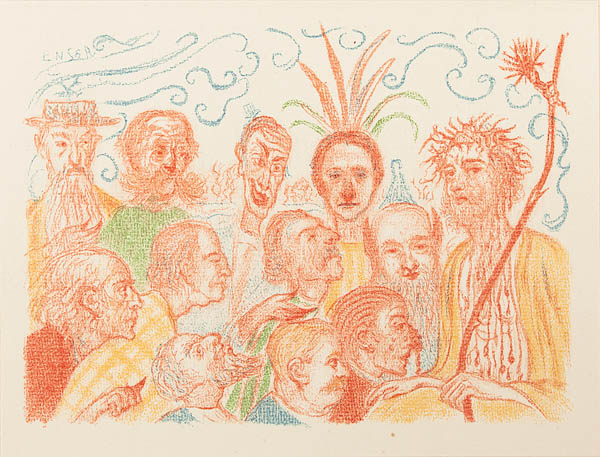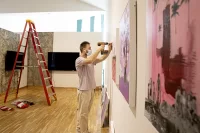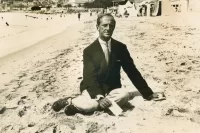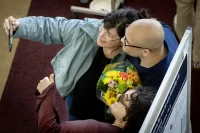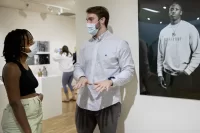
Ensor lithographs coming to Museum of Art
An important collection of lithographs by 19th-century Belgian artist James Ensor goes on display in the Synergy Gallery at the Bates College Museum of Art on Monday, Jan. 23.
The exhibition James Ensor: ‘Scènes de la vie du Christ’ and other works shows through March 18 along with a companion show, Xiaoze Xie: Amplified Moments (1993-2008).
Xie, a Learning Associate at Bates this winter, presents a lecture about his work to formally open the exhibitions at 6 p.m. Thursday, Jan. 26, in Olin Arts Center’s Room 104. A reception follows.
Located in the arts center at 75 Russell St., the museum is open to the public at no cost from 10 a.m. to 5 p.m. Monday through Saturday (and until 7 p.m. Wednesdays during the academic year). To learn more, please contact museum@bates.edu or 207-786-6158.
The Ensor exhibition presents three dozen small but striking works by an artist recognized for elevating caricature and social critique to a high art form.
Although Ensor started as a realist, by the 1880s his subjects became increasingly fantastical and his palette intensely colorful. In the late 19th century he was associated with the artistic avant-garde in Belgium, notably an anti-establishment group of artists called “Les XX” (“The 20”).
His well-known painting “The Entry of Christ into Brussels,” which depicts the Messiah surrounded by a grotesque mob that includes politicians and members of Ensor’s own family, is considered an important precursor to Expressionism.
Though an atheist, Ensor saw Christ as a useful allegory and, increasingly from the late 1880s, used religious themes to convey his distaste for the direction he saw humanity taking.
Finished in 1921, Scènes de la vie du Christ (“Scenes from the Life of Christ”), is a portfolio of 32 lithographs executed from colored-pencil drawings made between 1911 and 1920. Considered perhaps his most encompassing graphic project, the portfolio epitomizes Ensor’s adaptation of the late-medieval combination of religious themes and carnival humor.
Like many works in his oeuvre, Scènes de la vie du Christ contrasts beauty with monstrous figures, and delicate rendering with bold and bizarre passages.
The exhibition also features several etchings by the artist, including “La mort poursuivant le troupeau des humains” (“Death Pursuing a Flock of Mortals”),1896, and “La cathédrale” (“The Cathedral”), 1886.
Art historian Eric Hirshler will lead informal discussions with Bates classes and students during the exhibition. Hirshler is emeritus professor of art history at Denison University.
